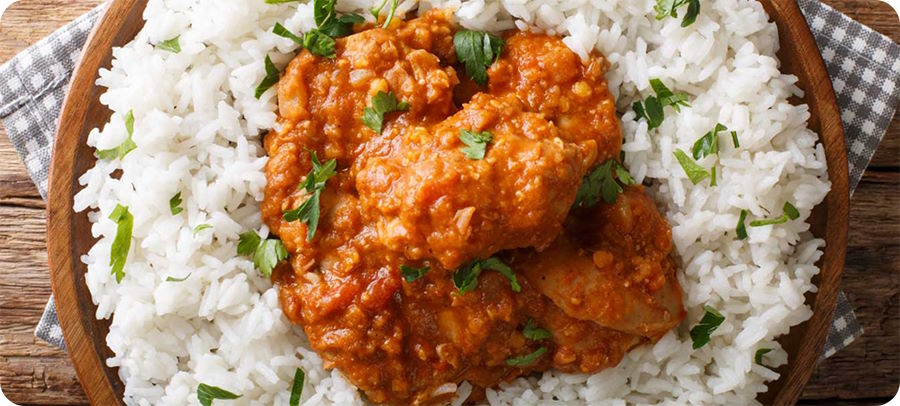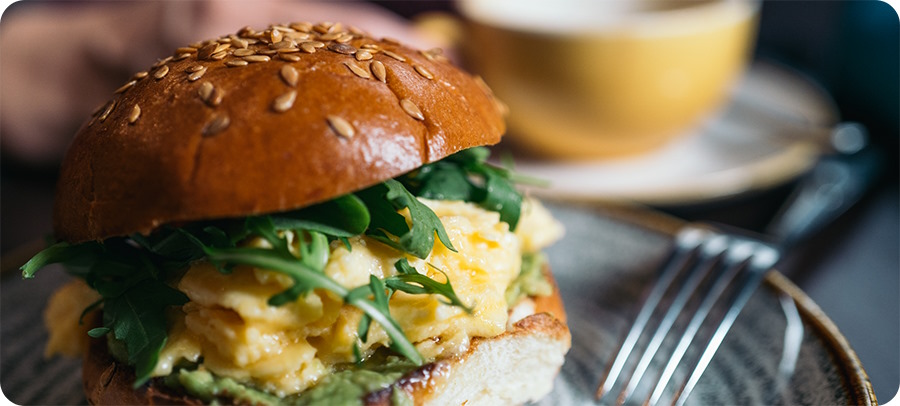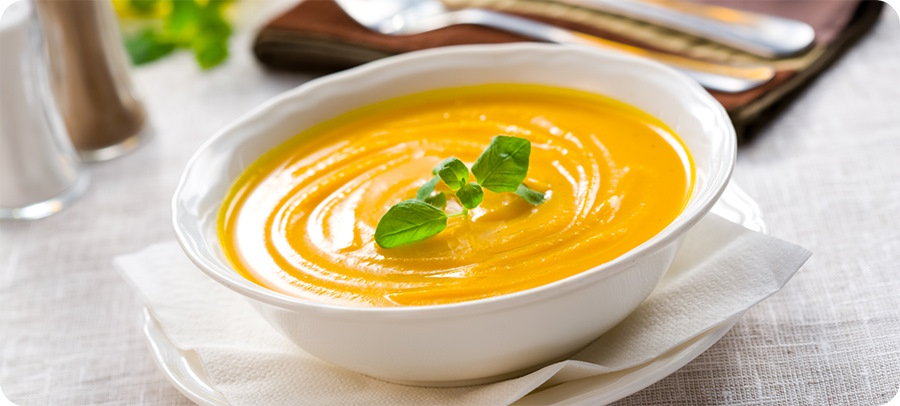Cooked-from-Scratch programs require dedicated personnel (e.g., staff, volunteers, students, or a partnering organization) with the skills, time, space, and equipment in the school to prepare snacks or meals from scratch. This includes access to either a stovetop, oven, instant pressure cooker, or electric griddle. Life skills cooking classes, Foods classes, and Culinary Arts programs are also considered Cooked-from-Scratch programs.
To ensure a variety of nutritious foods offered, a balanced Cooked-from-Scratch meal program ideally offers at least one choice from each of the 3 food categories from Canada’s food guide:
- Vegetables & Fruits
- Grains
- Protein
To increase students’ opportunities to have a variety of nutrients, a snack program ideally offers 2 out of the following 3 food categories from Canada’s food guide:
- Vegetables & Fruits
- Grains
- Protein
Water should be readily available to students at all times. At meals and snacks, schools are encouraged to also offer a beverage that contains at least 25% Daily Value of calcium and is fortified with at least 10% Daily Value for Vitamin D. This can help children and teens meet their daily needs for calcium and vitamin D. Examples include:
- Plain (unsweetened) milk (0-2% MF)
- Plain (unsweetened) kefir (0-2% MF)
- Plain (original) plant-based beverages (e.g., soy, almond, rice)
Where condiments are offered to accompany meals, it is best to offer them in small amounts and serve them on the side where possible.
Examples of Cooked-From-Scratch Choices:
For meals: Mix and match to include one food from each of the 3 food categories.
For snacks: Mix and match to include one food from 2 of the 3 food categories when possible.
Vegetables & Fruits
- Seasonal* Vegetables & Fruits such as:
- Apple
- Berries
- Carrots, baby carrots
- Cucumber, mini-cucumbers
- Grape tomatoes
- Nectarine
- Pear
- Plum
- Other vegetables and fruit (frozen fruit, banana, oranges, grapes, snap peas, etc.)
- Grated vegetables (carrots, beets, zucchini)
- Leafy greens (lettuce, spinach, kale)
- Cooked vegetables (carrots, zucchini, broccoli)
- Canned fruits (packed in juice), e.g., fruit cups
- Canned vegetable soup (with less than 15% Daily Value for sodium)
- Fruit sauces (100% fruit with no added sugar, e.g., unsweetened applesauce)
- Dried vegetables and fruits (100% fruit with no added sugar, e.g., dried apple rings)^
- Cultural plant foods (e.g. seaweed, native berries and roots)**
*Visit buy BC’s Guide to local, seasonal foods to find out when produce is in season in B.C.
**For examples, see: https://www.fnha.ca/Documents/Traditional_Food_Fact_Sheets.pdf
^ Dried fruit can stick to teeth and cause dental cavities. Therefore if choosing dried fruit, ensure it is served with other foods.
Grains (whole grains when possible)
- Bagels
- Baked Bannock
- Bread
- Bun
- Cooked grains (oats, rice, quinoa, barley, bulgur, buckwheat, amaranth, millet)
- Chapati
- English muffins
- Flatbread
- Muffins made with whole grains (e.g., oats) or bran, and/or a fruit or vegetable*
- Naan
- Noodles (wheat, rice)
- Pasta
- Pancakes (made from whole grains)
- Pitas
- Pizza crust
- Plain breakfast cereal (e.g., flakes of corn/bran, oat o’s, shredded wheat)
- Plain (non-coated) cereal or granola bars made with whole grains
- Plain crackers
- Rice cakes
- Tortillas wraps
- Waffles (made from whole grains)
- Gluten-free products when necessary
* For example, small blueberry bran muffin, oatmeal berry muffin, morning glory muffin
Proteins
- Beans (black, red), canned/dried
- Bean spreads (e.g., black bean)
- Canned fish or seafood
- Cheese strings
- Chicken, turkey (fresh/frozen)
- Chickpeas, canned/dried
- Cottage cheese
- Edamame
- Eggs (e.g., scrambled, hard-boiled)
- Fish or seafood (fresh/frozen)
- Game (moose, deer, etc.)*
- Hard cheese (cheddar, mozzarella)
- Hummus packs
- Lentils, canned/dried
- Lean beef or pork (fresh/frozen)
- Lean ground meat or poultry (fresh/frozen)
- Nuts, seeds, nut butters and seed butters**
- Paneer
- Tofu or tempeh
- Yogurt or Greek yogurt
*Work with your local Environmental Health Officer
**Dependent on school food allergy policies
If you are looking for B.C. foods options, search the Feed BC Directory– a searchable B.C. food and beverage product database for commercial and institutional buyers.
Sample 4 week Cooked-From-Scratch Breakfast Plan:
Breakfast Plan - Week 1
- Apple Date Protein Bar
- Yogurt
- Plain milk or fortified alternative
- Bagel
- Seed butter
- Orange slices
- Plain milk or fortified alternative
- Oatmeal
- Yogurt
- Blueberries
- Plain milk or fortified alternative
- Breakfast Sandwich
- Banana
- Plain milk or fortified alternative
Breakfast Plan - Week 2
- Toast
- Scrambled eggs
- Orange slices
- Plain milk or fortified alternative
- Yogurt Parfait
- Plain milk or fortified alternative
- Egg Bites
- Toast
- Cinnamon Apple slices
- Plain milk or fortified alternative
- Rocky Mountain Cafe Muffins
- Cottage cheese
- Canned peaches
- Plain milk or fortified alternative
- Fruit Smoothie
- Toast
- Seed butter
Breakfast Plan - Week 3
- French Toast
- Yogurt
- Berry sauce
- Plain milk or fortified alternative
- Boiled eggs
- Toast
- Orange slices
- Plain milk or fortified alternative
- Fruit Smoothie
- Toast
- Seed butter
- Plain milk or fortified alternative
- Avocado Toast
- Fruit cup
- Plain milk or fortified alternative
- Bagel
- Baked beans
- Cinnamon apple slices
- Plain milk or fortified alternative
Breakfast Plan - Week 4
- Fruit Smoothie
- Toast
- Seed butter
- Boiled egg
- Toast
- Sliced fruit
- Plain milk or fortified alternative
- Whole grain cereal
- Banana
- Pumpkin seeds
- Plain milk or fortified alternative
- Yogurt
- Granola
- Cut fruit
- Plain milk or fortified alternative
- Breakfast Burrito
- Apple slices
- Plain milk or fortified alternatives
Sample 4 week Cooked-From-Scratch Lunch Plan:
Recipes for Student Nutrition Programs
The Lunchbox
Nourish Nova Scotia Local Lunch Toolkit





